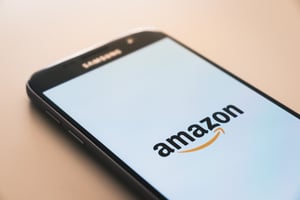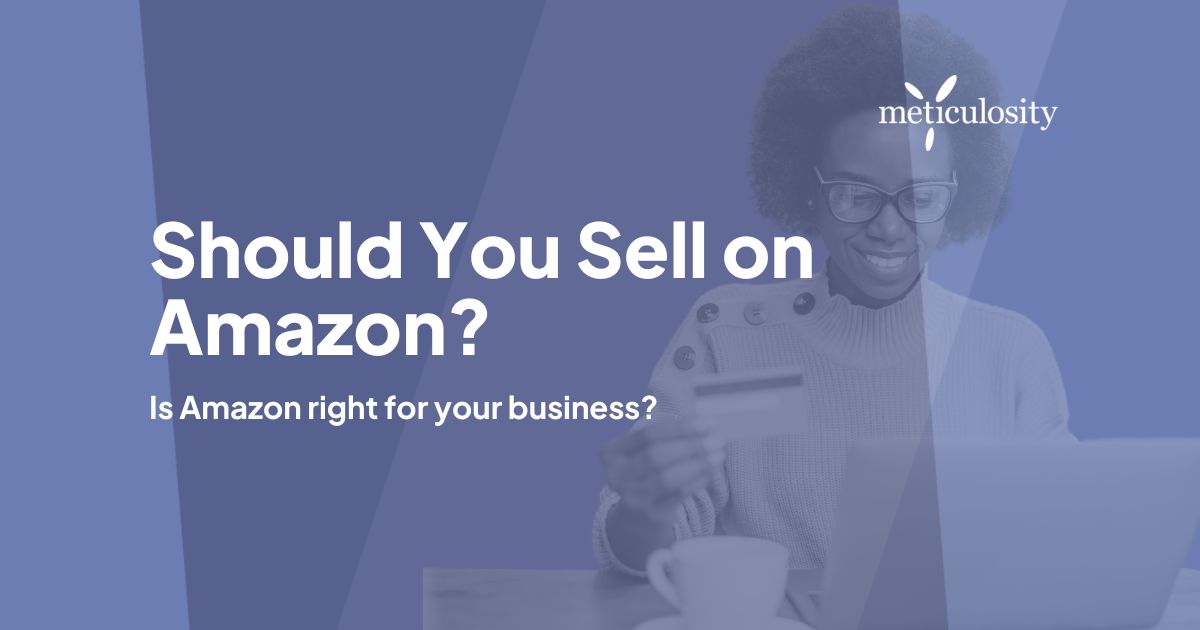These days, we’re getting a ton of clients and prospects asking us about selling on Amazon, as it’s a pretty obvious online sales channel to explore. Many businesses are also looking to replace revenue that may be lost from their brick and mortar or traditional retail environments right now due to Covid-19.
Selling via Amazon is certainly worth evaluating. Currently there are more North American customers shopping online via Amazon than any other sales channel. But is Amazon the holy grail of ecommerce for all businesses looking to sell online? Let's look at a handful of the many, many factors you should consider when deciding if Amazon is right for you.
The Obvious Benefits of Amazon
 It's no secret that Amazon is the online retailer of choice worldwide for both sellers and consumers. Amazon had more than 2.5 million active sellers in 2019. There are roughly 25,000 sellers on Amazon with more than $1 million in sales, and 200,000 sellers with more than $100,000 in sales. 89% of consumers are more likely to buy products from Amazon than other e-commerce sites, and two-thirds of survey respondents (66%) typically start their search for new products on Amazon, compared with just 20% who start with a search engine like Google.
It's no secret that Amazon is the online retailer of choice worldwide for both sellers and consumers. Amazon had more than 2.5 million active sellers in 2019. There are roughly 25,000 sellers on Amazon with more than $1 million in sales, and 200,000 sellers with more than $100,000 in sales. 89% of consumers are more likely to buy products from Amazon than other e-commerce sites, and two-thirds of survey respondents (66%) typically start their search for new products on Amazon, compared with just 20% who start with a search engine like Google.
Let’s also highlight some of the other, obvious benefits of Amazon:
- Amazon can help you reach an absolutely massive audience, whether the goal is to reach Canada, the US, North America, or across the globe.
- Amazon can help you gain new customers and increase your net new revenue.
- Amazon can help you improve availability to your existing customers, whether your bricks-and-mortar location is closed or you are experiencing supply chain issues.
- Amazon offers best-in-class sales technology.
Now, while it might seem like a lucrative sales channel to add into your distribution mix, it’s not always right for everybody. The wrong products, or a bad strategy can absolutely sink you on Amazon if you’re not prepared. Here are a few of the many factors you should consider when deciding whether Amazon makes sense for your business.
Extremely High Expectations for Amazon Sellers
Amazon has built up extremely high expectations of their sellers. As an example, imagine if one out of every three times you ordered something from Amazon it didn’t show up, or was delayed. You'd likely stop ordering from Amazon altogether. As such, they have very strict fulfillment requirements in order to have built such ubiquitous trust among online consumers. And it's incredibly important to Amazon that they maintain that. So if you cancel orders due to stock issues, if your shipping is delayed, if you experience customer service issues, and so on, it can lead to swift penalties from Amazon. Even if these are due to accidental, honest mistakes, your products can be removed from the platform for days, weeks, or potentially permanently.
Now, imagine this from an Amazon seller's point of view. Shipping just 4% of orders late within a 10 or 30 day trailing period can lead to temporary account deactivation. 4% is not a lot, and could be an honest mistake when integrating an amazon plug in and stock levels with your own ecommerce site, where customers can potentially order direct from you as well. You many not realize until it is too late. Same thing goes for cancellation rates - Amazon's expectation rates are even stricter with penalties starting at just a 2.5% cancellation rate.
The Middleman always takes a cut
Another consideration for your business with Amazon is that the middleman always has to take their cut as well. The cost to sell on Amazon depends on which selling plan you choose:
Individual Plan: Suitable for those businesses looking to sell <40 items/month. The Individual plan has no monthly subscription fee, but a $1.49CAD/item fee in additional to referral and closing fees (see more below).
Professional Plan: Recommended for most established brands. The monthly subscription fee is $29.99CAD with no per item charge, plus referral and closing fees.
Referral fees vary by category, with a minimum of $0.40 cents per unit, up to 15% of the selling price, with a total average around 13% of the item's selling price. Closing fees, high volume listing fees, and refund administration fees must also all be taken into consideration when building our your Amazon pricing structure and profit margins.
FulfilLment by Amazon
One of the most appealing features about Amazon is their FBA, or Fulfillment by Amazon service. With FBA, you ship your products to an Amazon warehouse, typically on a pallet configuration. They add to their warehouse inventory, and when a customer purchases one of your products, it gets picked, packed and shipped by Amazon staff, and delivered via on of Amazon's preferred courier services.This is the model most Amazon retailers use today. For most small business, unless you already have your own fairly complex and established distribution system or are working with your own 3PL (3rd Party Logistics Provider), selling on Amazon offers an attractive distribution and shipping model via their extensive logistics network, at their preferred, negotiated shipping prices which are among the lowest in the industry. Seems like a no-brainer!
However, with FBA, again, there's another per-item fee, on top of Amazon's previously-mentioned fees, that can range from $3.37- $8.05 per unit, based primarily on weight. Anything weighing under 100g is $3.37/unit, and then an additional $0.40 per 100g until you reach 500g at which the price per unit jumps yet again.
In addition, consider the format in which your product will physically be shipped as dimensional size can factor into FBA prices as well. Flat packed vs. padded envelope vs. boxed. If you have a large product that is also heavy it, it will likely be:
- Costly for you to initially ship to an Amazon warehouse, and
- Cost a lot for them to fulfill it on your behalf.
Be Wary of “Fee Stacking”
Lastly, margins and pricing mix are two of the most important factors to analyze before launching your product on Amazon. As an example, if you use Shopify for your ecommerce store, you’re already aware that Shopify takes a % of everything you sell as well as a fixed fee. Then, to integrate Shopify with Amazon you need to use a fairly simple plug in, which sounds great in theory, right?
However in this situation you’ve now paid your % to Shopify and now have to pay Amazon’s seller fees as well. “Fee Stacking” can eat away at your profit margins pretty quick if you’re not fully aware of all the fees involved. So, even if you have an existing product with an existing customer base, there's no guarantee that selling on Amazon will actually net you a positive ROI once you go through actually setting up your Amazon integration. You don't want to end up putting in a ton of hours and work to only make 6 cents per unit, or worse, offer a negative return in spite of all the perceived benefits to selling via Amazon.
Do Your Homework
There are many, many more factors to determine whether or not Amazon is the right fit for your business, and what's most important is that you do you homework, develop a strategy, and have a clear understanding of the true ROI.
In another post, we'll discuss what types of products are ideal for Amazon. For certain products, industries, and price points, Amazon is a home-run, makes perfect sense and provides an opportunity for explosive sales growth. Our team at Meticulosity has almost 12 years of multi-channel ecommerce working with Amazon, eBay, Sears and more. We can help you map out your Amazon strategy and build the right technology stack to ensure you maintain both margins and happy customers.







